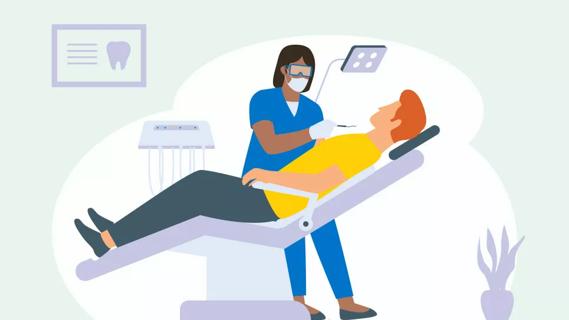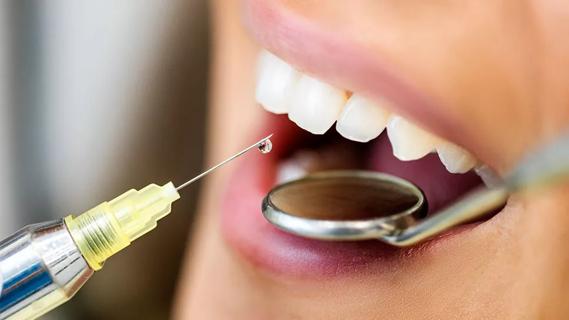Advances in technology and medications have made the process safer than ever

If your child needs surgery, odds are you’re more than a bit nervous. Your little one is getting put under general anesthesia for the upcoming procedure, after all. Just thinking of it has you panicked.
Advertisement
Cleveland Clinic is a non-profit academic medical center. Advertising on our site helps support our mission. We do not endorse non-Cleveland Clinic products or services. Policy
Well, here’s one fewer reason to worry: “Anesthesia is very safe with a low risk for complications,” says pediatric anesthesiologist Lauren Licina, MD. “Parents and families shouldn’t be scared.”
But understanding what’s involved in the anesthesia process may help ease any lingering fears. We asked Dr. Licina to explain what happens so you and your child know what to expect.
General anesthesia is used to sedate patients (put them to sleep) so they don’t feel pain during surgeries or other medical procedures. Anesthesiologists monitor people carefully to make sure they stay asleep for the whole procedure.
A variety of medications are used during the process. These anesthetics are carefully adjusted and administered according to a child’s age and weight so they don’t receive more medication than needed.
The treatments offered today reflect the many, many advances made over time, says Dr. Licina.
The first recorded case of pediatric anesthesia came in 1842, according to researchers. At that time, children were simply treated as miniature adults — an approach that isn’t ideal given differences in body development.
It wasn’t until 1930 that anesthesiology evolved to meet the specific needs of children, with new techniques and equipment that reflected the age of patients from infants through their teenage years.
Advertisement
Research shows that pediatric anesthesia has become increasingly safe with advances in technology and medication. In the United States, more than 6 million children and 1.5 million infants get “put under” for surgery every year.
“In the past eight years, there has been a lot of research looking at the long-term effects of anesthesia in young children,” says Dr. Licina. “The good news is these studies have shown that children who had only a few anesthetics did not show any behavioral or cognitive deficits.”
There has also been increased focus on training specialists to provide anesthesia to the youngest of patients.
While risks associated with general anesthesia for children are low, there can be risks — particularly when the procedure is done multiple times at a young age.
The U.S. Food and Drug Administration (FDA) warns that “repeated or lengthy use” of general anesthetic or sedation drugs in children younger than 3 years old may affect their brain development.
It should be noted that the call for caution is based on nonhuman studies, clarifies Dr. Licina.
Many factors contribute to brain development, making it challenging to isolate any potential effects of general anesthesia. Ongoing research continues to look for potential connections between child brain development and exposure to anesthesia medications.
But if your child needs general anesthesia multiple times, it’s typically not by choice. Chances are they’re dealing with a serious or even life-threatening health condition that demands immediate attention. These can include:
“These are situations where delaying surgery is riskier than the small risks from anesthesia,” notes Dr. Licina.
Anesthesiology guidelines recommend delaying some elective surgeries until after a child’s third birthday to play it safe. Talk to your healthcare provider about the best approach for your child’s situation.
Studies indicate minimal exposure is unlikely to harm children, including infants and toddlers. The most common side effects in these cases are typically mild nausea and grogginess.
Not all surgeries require a pediatric anesthesiologist, but Dr. Licina recommends asking if one is available if your child is having a lengthy or complex procedure or is younger than 3 years old.
For many families, the worry leading up to a child’s surgery is the hardest part. Take some time to prepare so you can calm the butterflies in your child’s tummy (and your own). You can do that by:
Advertisement
Advertisement
If your child (or you) can’t shake off feeling anxious about an upcoming surgery, many healthcare centers can offer advice on relaxation techniques or provide other forms of emotional support, shares Dr. Licina.
Advertisement
Learn more about our editorial process.
Advertisement

Spinal blocks provide complete numbing for shorter periods, while epidurals can allow for some feeling

Epidurals can help with the discomforts of labor and delivery — but whether you want one is entirely your choice

If you have naturally red hair, feeling the pain may be in your DNA

The numbness and tingling should wear off in about two hours

The emergency room is for serious medical issues; urgent care can help when you can’t get a quick appointment with your child’s doctor

Gripe water isn’t regulated by the FDA, and research doesn’t support its use

Lice don’t jump — but they can spread with direct head contact

Some warts will clear up on their own, but others may need home remedies or medical care

The ‘sunshine vitamin’ is found naturally in some fish and is added to other foods

Autism and ADHD often go hand in hand, giving rise to the term AuDHD

The Yuzpe regimen is less effective than other forms of emergency contraceptives, and it’s associated with more side effects